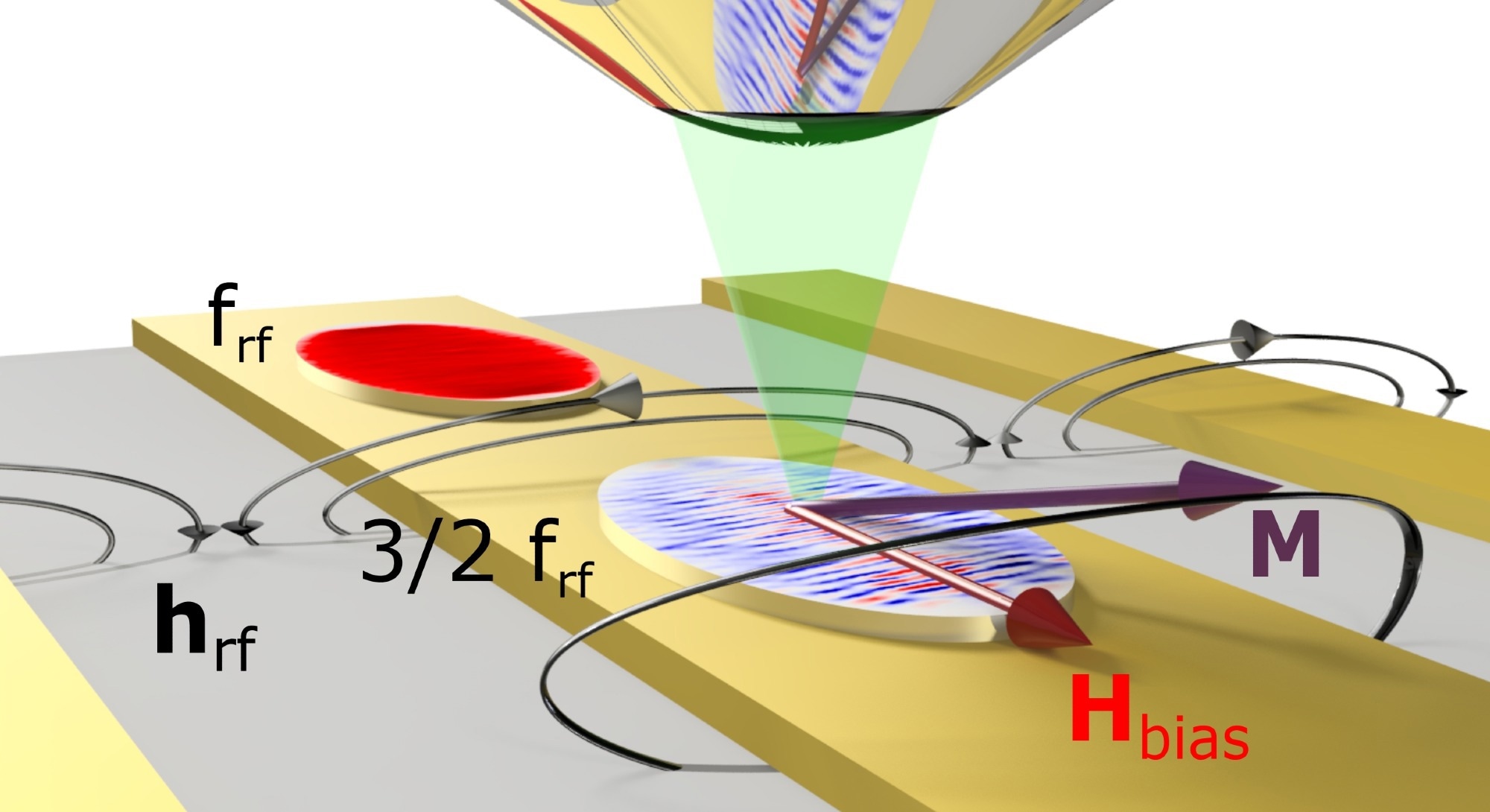For the first time, physicists from Martin Luther University Halle-Wittenberg (MLU) have successfully managed to use powerful alternating magnetic fields to produce a new kind of spin wave that was formerly only theoretically projected.
 Illustration of the experiment. Image Credit: Dreyer et al, Nature Communications (CC-BY-SA 4.0).
Illustration of the experiment. Image Credit: Dreyer et al, Nature Communications (CC-BY-SA 4.0).
The researchers present the microscopic images of these spin waves in their report published in the journal “Nature Communications.”
The general notion of spintronics is to apply a unique property of electrons—spin—for numerous electronic applications like data and information technology. The spin can be defined as the intrinsic angular momentum of electrons that generates a magnetic moment. When these magnetic moments are coupled, it produces the magnetism that could eventually be applied in information processing.
Locally exciting these coupled magnetic moments using a magnetic field pulse causes it to spread like waves across the material. These are called magnons or spin waves.
A distinct type of those waves is at the center of the research performed by the physicists from Halle. Generally, the non-linear excitation of magnons creates integers of the output frequency—1,000 megahertz becomes 2,000 or 3,000, for instance.
So far, it was only theoretically predicted that non-linear processes can generate spin waves at higher half-integer multiples of the excitation frequency.
Professor Georg Woltersdorf, Institute of Physics, Martin Luther University
The researchers have currently been able to experimentally demonstrate which circumstances are needed to produce these waves and to regulate their phase. Phase can be defined as the state of the oscillation of a wave at a specific point and time.
We are the first to confirm these excitations in experiments and have even been able to map them.
Professor Georg Woltersdorf, Institute of Physics, Martin Luther University
The physicist explains that the waves can be produced in two stable phase states, which means this finding could possibly be employed in data processing applications since computers, for instance, also utilize a binary system.
The Deutsche Forschungsgemeinschaft (German Research Foundation, DFG) funded the study.
Journal Reference:
Dreyer, R., et al. (2022) Imaging and phase-locking of non-linear spin waves. Nature Communications. doi.org/10.1038/s41467-022-32224-0.